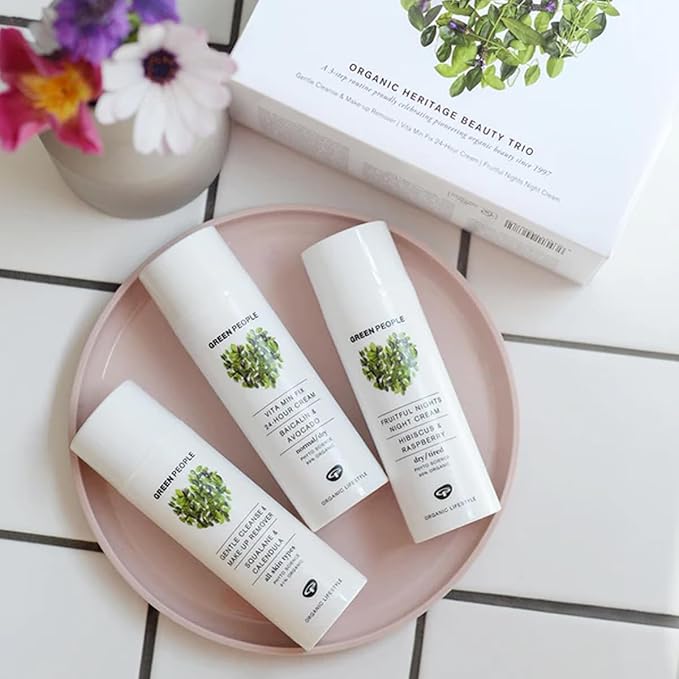Thinking of replacing your roof with something smart and sustainable? Shingles might just be the perfect eco-conscious choice. In our latest EcoBlog article, we explore six compelling reasons why shingles are gaining popularity among homeowners. From their energy efficiency and low-maintenance design to their wide range of styles and cost-effectiveness, shingles offer a brilliant blend of practicality and aesthetics. Their lightweight structure makes installation quick and less resource-intensive, while recyclable materials and long-lasting performance contribute to a more sustainable future. Discover how shingle roofing can improve your home’s value and minimise environmental impact - all without compromising on curb appeal.
Share your articles with us and get published! Reach out at hello@friendlyturtle.com.
Top 7 Careful Considerations When Shopping Sustainably for Clothes

Many people are making the transition to sustainable clothing. Sustainability depends on numerous factors, including the materials and transportation used among others. If you have made this switch or are thinking of doing it, here are some of the factors you should consider when doing your research to find the best brands to shop from.
1. Second Hand Vs. New
Buying new clothes typically means there is someone discarding a piece of perfectly usable garments somewhere. It also keeps brands producing new clothes which increases their production burden and multiplies their impact on the environment.
Buying pre-owned clothes from online resale stores, vintage sources, consignment stores, and thrift shops means you are doing your part in not increasing the demand for new clothes. You also get to save some money while also ensuring good, usable clothes do not end up in a landfill, potentially harming the environment.
2. The Quality of the Clothes
Buying a few high-quality pieces is much better for the environment than buying low-quality garments you will discard after a few wears. When shopping, ensure the clothes are of high quality and a good fit so you can wear them numerous times before you have to go shopping again.
Done right, you can find clothes that you can mix and match to create new ensembles that look great. Mixing and matching like this can also make the clothes last much longer as there will be long periods between wearing the garment multiple times.
3. The Materials Used
This also ties into the quality of the clothes as different materials have varying levels of durability, but it also affects how sustainable the clothes are. Most man-made materials harm the environment due to how much water they use in their production and the chemicals used. Synthetic fibers like rayon, Lycra, acrylic, polyester, and nylon are the most egregious in this regard and so should not appear on your clothing labels if you shop sustainably.
Instead, opt for clothes that are made out of eco-friendly natural materials. Examples include cotton, wool, silk, linen, and hemp. Shopping for clothes made out of these materials means you reduce the amount of microplastics that end up in the oceans and rivers. These materials also decompose fully and thus do little harm to the environment.
4. Recycling
Another important consideration is where a brand recycles materials. The fashion industry produces a lot of products every year, many of which do not end up in the hands, or bodies, of consumers. This is one of the things many environmentally conscious people do not like about fast fashion.
Many brands are doing their part in developing materials that can be reused to create new pieces. Brands like Issey Miyake are doing their part by developing environmentally friendly materials in their labs. These materials are then recycled and used to create new fashion items. You can check out the beautiful clothing from Issey Miyake made following their sustainable practices.
5. Packaging and Delivery
When researching which sustainable brands to buy from, you have to look at their packaging materials and how their clothes get to you or a retail shop near you. Recycled and plastic-free packaging material is not only good for the environment, but it also helps these companies save money which can make their products cheaper.
The modes of transportation the company uses and how far the clothes are made are other factors to consider. Goods transportation is one of the biggest sources of pollution so buying from brands doing their best to reduce emissions and pollution is best. Companies that produce their goods near you means they consume less fuel and therefore pollute the environment a lot less by the time their clothes reach your door or retail store.
6. Brand Transparency
Brand transparency is not just about the materials and modes of transportation a company uses, but also their labor practices. A company might be making clothes using natural materials and using electric vehicles to deliver these clothes but using unethical practices during production. These practices can include not reporting their water and chemical usage, not having a sustainability plan and using unfair labor practices. Doing proper research could help you know which companies are doing this.
Bringing awareness to companies that do this and not shopping from them means a large enough number of people will be taking money from them and instead giving it to companies that care about the environment and their workers.
7. Certifications
You can find a list of ecolabels that are applied to textiles and garments to tell you which clothes were made ethically and sustainability. Knowing the most common and important of these labels will help you pick out sustainable brands the next time you go shopping.
Sustainable shopping is something that everyone who can, should practice. It helps protect the environment, take money away from companies not doing their part, and saves customers and brands money in the long term. Keep the considerations above in mind the next time you go shopping to do your part.
0 comments
Let customers speak for us
Blog posts
As Texas grapples with rapid urban growth and environmental challenges, sustainable waste management practices are becoming essential. In this EcoBlog feature, we explore how recycling, composting, and waste-to-energy innovations are reshaping Texas’s approach to rubbish removal. From communities embracing curbside recycling schemes to construction firms reusing building materials, green initiatives are gaining traction. Companies like Waste Removal USA are leading the shift with eco-friendly dumpster hire and responsible disposal solutions. With public-private collaboration driving local programmes, Texas is building a more circular economy - reducing landfill use, conserving resources, and inspiring sustainable change across the state.
Caring for your urological health doesn’t have to conflict with living sustainably. At EcoBlog, we advocate for natural, eco-friendly approaches to wellness. Staying hydrated with clean, filtered water, opting for organic, antioxidant-rich foods like berries and leafy greens, and avoiding processed products high in salt are all excellent steps. Incorporating regular exercise, stress management techniques, and practicing healthy bathroom habits can significantly improve urological health while supporting a sustainable lifestyle. Eco-conscious wellness starts with mindful, everyday habits.



